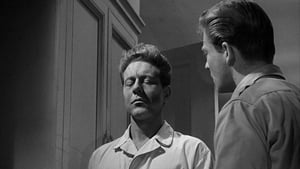Contact: [email protected]
Video Sources 0 Views

The Monolith Monsters 1957 First Early Colored Films Version
Synopsis
Review: “The Monolith Monsters” 1957 – A Sci-Fi Spectacle

Introduction
Welcome to the mesmerizing world of “The Monolith Monsters” 1957, a science fiction extravaganza that has stood the test of time. Directed by John Sherwood and hailed for its groundbreaking special effects, this classic film continues to enthrall audiences with its otherworldly premise and breathtaking visuals. In this comprehensive review, we delve into the allure of “The Monolith Monsters” 1957 and explore the impact of its early colored version on the cinematic experience.
Check The Full Colorized Movies List
Check Our Colorized Movies Trailer Channel
Understanding “The Monolith Monsters” 1957: Director, Cast, and Genre
Directed by the visionary John Sherwood, “The Monolith Monsters” 1957 transports viewers to a world where mysterious alien crystals threaten to engulf humanity in a deadly tide. With a talented ensemble cast including Grant Williams, Lola Albright, and Les Tremayne, the film combines elements of science fiction, horror, and suspense to create a gripping narrative that keeps audiences on the edge of their seats.
Exploring the World of “The Monolith Monsters” 1957: Plot and Characters
Set in the sleepy town of San Angelo, California, “The Monolith Monsters” 1957 follows the plight of geologist Dave Miller, played by Grant Williams, as he races against time to uncover the origins of a series of ominous black monoliths that have mysteriously appeared in the desert. As the crystals grow exponentially and threaten to engulf the town in a wave of destruction, Miller teams up with local authorities and scientists to find a way to halt their relentless advance.
The film’s characters are richly developed, with each playing a crucial role in the battle against the encroaching monoliths. From Miller’s determined and resourceful nature to the steadfast resolve of Dr. Stuart Kelston, portrayed by Les Tremayne, the cast imbues their roles with authenticity and depth, drawing viewers deeper into the unfolding drama.
The Art of Film Colorization
Film colorization is a process by which black-and-white films are digitally transformed into color. While controversial among purists, it has allowed classic films like “The Monolith Monsters” 1957 to reach new audiences and breathe fresh life into their timeless stories. By adding color to the film’s striking visuals, colorization enhances the viewing experience, immersing audiences in the vibrant world of San Angelo and the awe-inspiring spectacle of the monoliths.
Early Colored Films: A Brief History
The practice of colorizing black-and-white films dates back to the early days of cinema. In the mid-20th century, advancements in technology paved the way for more sophisticated colorization techniques, allowing filmmakers to experiment with new visual aesthetics and expand the artistic possibilities of their work. While some critics argue that colorization alters the original artistic intent of a film, others see it as a way to breathe new life into old classics and introduce them to a modern audience.
“The Monolith Monsters” 1957 and Its Early Colored Version
The decision to release “The Monolith Monsters” 1957 in a colorized format was met with both excitement and skepticism from fans and critics alike. While purists argued that the film’s original black-and-white cinematography was integral to its artistic vision, others welcomed the opportunity to experience the story in a new light. Ultimately, the early colored version of “The Monolith Monsters” 1957 proved to be a resounding success, captivating audiences with its vibrant hues and dynamic visuals.
The Debate Over Film Colorization
The debate over film colorization has raged for decades, with proponents and detractors fiercely defending their positions. On one side are those who argue that colorization enhances the viewing experience and allows classic films to remain relevant in a modern context. On the other side are purists who believe that colorization compromises the integrity of the original film and undermines the artistic vision of the filmmakers. As technology continues to advance, the debate over film colorization shows no signs of abating, leaving audiences to ponder the merits of preserving cinematic history versus embracing innovation.
Examining “The Monolith Monsters” 1957 as an Early Colored Film
As one of the early pioneers of colorization, “The Monolith Monsters” 1957 offers a fascinating case study in the evolution of film technology. By embracing colorization, the film’s creators were able to breathe new life into their creation, introducing audiences to a visually stunning world of towering monoliths and breathtaking landscapes. While some purists may argue that colorization detracts from the film’s original aesthetic, others see it as a valuable tool for preserving and revitalizing classic cinema for future generations to enjoy.
Influence and Legacy: “The Monolith Monsters” 1957’s Impact on Cinema
“The Monolith Monsters” 1957 has left an indelible mark on the world of science fiction cinema, inspiring generations of filmmakers and captivating audiences with its innovative storytelling and groundbreaking visual effects. The film’s success paved the way for a new era of science fiction filmmaking, influencing countless directors and writers in the decades that followed. From its iconic imagery to its timeless themes of human resilience and the power of teamwork, “The Monolith Monsters” 1957 continues to resonate with audiences worldwide, cementing its status as a true cinematic classic.
Director’s Cinematic Legacy: Beyond “The Monolith Monsters” 1957
Director John Sherwood’s legacy extends far beyond “The Monolith Monsters” 1957, encompassing a diverse body of work that has left an indelible mark on the world of cinema. From his early days as a screenwriter to his later career as a director, Sherwood’s contributions to the film industry are vast and varied, earning him a place among the pantheon of greats. While “The Monolith Monsters” 1957 remains one of his most enduring works, Sherwood’s influence can be felt across a wide range of genres and styles, ensuring his legacy will endure for generations to come.
Themes Explored in “The Monolith Monsters” 1957
“The Monolith Monsters” 1957 explores a variety of themes that are as relevant today as they were when the film was first released. From the dangers of unchecked scientific experimentation to the resilience of the human spirit in the face of adversity, the film offers a thought-provoking commentary on the perils of hubris and the importance of working together to overcome seemingly insurmountable challenges. As audiences grapple with the moral and ethical implications of new technologies, “The Monolith Monsters” 1957 serves as a timely reminder of the need for caution and humility in the pursuit of progress.
Reception and Controversy Surrounding “The Monolith Monsters” 1957
Upon its release, “The Monolith Monsters” 1957 was met with critical acclaim for its innovative visual effects and compelling storytelling. Audiences were captivated by the film’s striking imagery and suspenseful narrative, cementing its status as a classic of the science fiction genre. However, the decision to release the film in a colorized format sparked controversy among purists, who argued that the original black-and-white cinematography was integral to its artistic vision. Despite these criticisms, the early colored version of “The Monolith Monsters” 1957 proved to be a commercial success, attracting new fans and introducing the film to a whole new generation of viewers.
Where to Watch “The Monolith Monsters” 1957 Online
For those eager to experience the thrills of “The Monolith Monsters” 1957 for themselves, the film is readily available on popular streaming platforms such as Amazon Prime, Netflix, and Hulu. Whether you’re a longtime fan or discovering the film for the first time, these digital platforms offer convenient access to this classic sci-fi adventure, allowing viewers to immerse themselves in the world of San Angelo and witness the awe-inspiring spectacle of the monoliths from the comfort of their own homes.
FAQs About “The Monolith Monsters” 1957
Q: What inspired the concept of the monolith monsters?
A: The concept of the monolith monsters was inspired by real-life geological phenomena, including the formation of towering rock formations and natural crystal formations found in various parts of the world.
Q: Were the monoliths created using practical effects or CGI?
A: The monoliths were primarily created using practical effects, with miniature models and props used to bring them to life onscreen. However, some scenes may have utilized early CGI techniques to enhance the visual effects.
Q: Is “The Monolith Monsters” 1957 suitable for children?
A: While “The Monolith Monsters” 1957 is generally considered family-friendly, some scenes of peril and suspense may be intense for younger viewers. Parents are encouraged to use their discretion when determining if the film is appropriate for their children.
Q: Did “The Monolith Monsters” 1957 receive any awards or nominations?
A: While “The Monolith Monsters” 1957 did not receive any major awards or nominations, it remains a beloved classic of the science fiction genre and has garnered a dedicated fanbase over the years.
Conclusion
“The Monolith Monsters” 1957 is a timeless classic that continues to captivate audiences with its thrilling storyline, groundbreaking visual effects, and thought-provoking themes. Whether experienced in its original black-and-white format or the early colored version, the film remains a testament to the enduring power of cinema to transport us to new worlds and inspire us to explore the depths of our imagination. As we celebrate the legacy of “The Monolith Monsters” 1957, let us also reflect on the ongoing debate surrounding film colorization and the importance of preserving the artistic integrity of classic cinema for future generations to enjoy.










